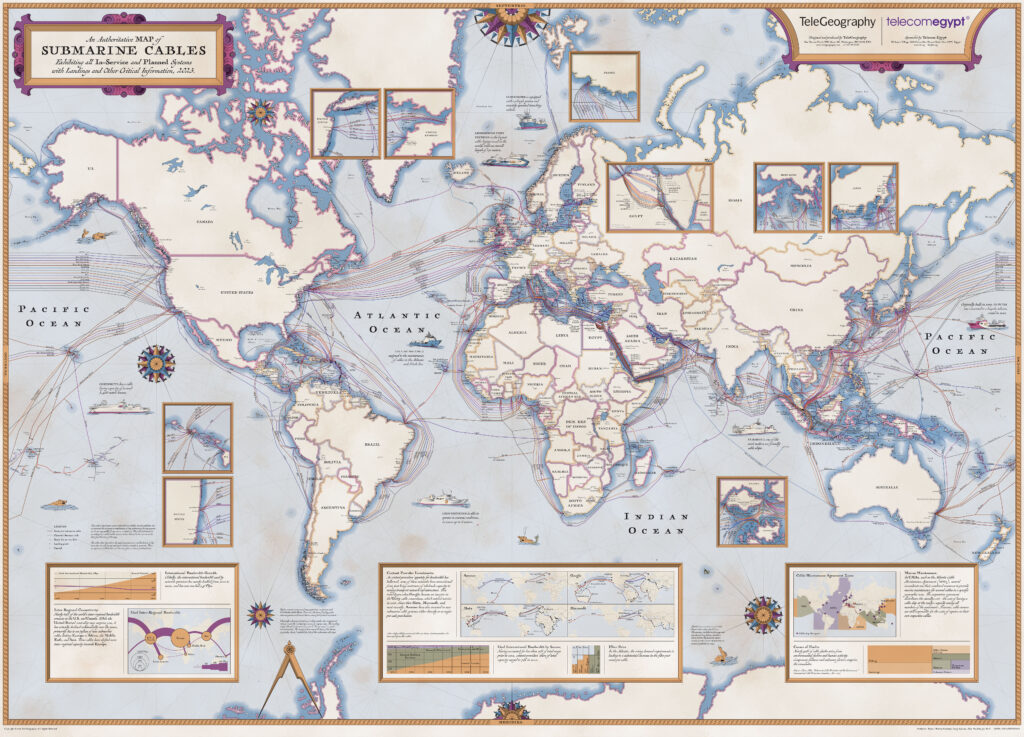Paul Brodsky, Senior Research Manager at TeleGeography
While artificial intelligence (AI) has been the most hyped demand driver in recent years, its impact on international internet capacity is not entirely clear.
A large amount of AI-driven demand is likely to be carried over the private networks of Google, Microsoft, Amazon, and Meta. Microsoft’s infrastructure is also supporting OpenAI, the company behind ChatGPT.
Here are some other factors that will shape how the global internet develops in the coming years
Post-COVID-19 Growth Trajectory
Initial evidence suggests that the spike in the rate of bandwidth and traffic growth in 2020 from the pandemic was a one-time event, and we have largely returned to more traditional rates of growth.
IP Transit Price Erosion
International transport unit costs underlay IP transit pricing. As new international networks are deployed, operational and construction costs are distributed over more fiber pairs and more active capacity, making each packet less expensive to carry. We already see a major shift from 10 GigE requirements to 100 GigE requirements and expect that 400 GigE will emerge in two to three years as a significant part of the market.
The introduction of new international infrastructure also creates opportunities for more regional localization of content and less dependence on distant hubs. As emerging markets grow in scale, they too will benefit from economies of scale, even if only through cheaper transport to internet hubs.
We already see a major shift from 10 GigE requirements to 100 GigE requirements and expect that 400 GigE will emerge in two to three years as a significant part of the market.
International Versus Domestic
While there’s little doubt that enhanced end-user access bandwidth and new applications will create large traffic flows, the challenge for operators will be to understand how much of this growth will require the use of international links.
In the near-term, the increased reliance on direct connections to content providers and the use of caching will continue to have a localizing effect on traffic patterns and dampen international internet traffic growth.
Bypassing the Public Internet
The largest content providers have long operated massive networks. These companies continue to experience more rapid growth than internet backbones, and they are expanding into new locations.
Many other companies, such as cloud service providers, CDNs, and even some data center operators, are also building their own private backbones that bypass the public internet. As a result, a rising share of international traffic may be carried by these networks.
In our IP Networks Research Service1, we analyze the meaning of our robust internet capacity and traffic data sets. We also discuss factors impacting IP transit pricing and the role individual backbone operators play.
Download the 2023 Executive Summary2 to keep reading our latest analysis.
* This article is reproduced with the kind permission of Telegeography.3
Paul Brodsky is a Senior Research Manager at TeleGeography. He is part of the network, internet, cloud, and voice research team. His regional expertise includes Europe, Africa, and the Middle East.
- https://www2.telegeography.com/global-internet- geography?hsLang=es
↩︎ - https://www2.telegeography.com/download-the-global-internet- geography-executive-summary
↩︎ - https://www2.telegeography.com/ ↩︎
Paul Brodsky is a Senior Research Manager at TeleGeography. He is part of the network, internet, cloud, and voice research team. His regional expertise includes Europe, Africa, and the Middle East.





